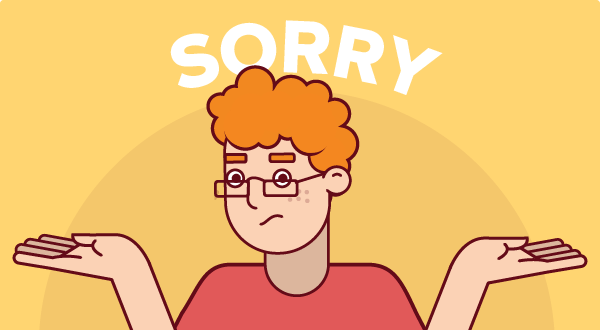The Startups Team

Welcome to Phase Four of a four-part Splitting Equity Series. If you missed it, start your journey here: Introduction - Early Startup Equity — Getting it Right before continuing on if you haven’t already, and go in order from there.
Phase One - Startup Equity - Avoiding Early Mistakes
Phase Two - How Startup Equity Works
Phase Three - How to Split Equity
Phase Four - Part 1 - Equity Management ( ←YOU ARE HERE 😀)
Part 2 - Recovering Startup Equity
Let's continue!
Splitting startup equity is only half the challenge for early-stage startups — managing startup equity is a whole different issue! How much equity we split and the founders' ownership percentage is generally determined by what we expect each founder to contribute.
But the problem is once we've issued a little founder preferred stock — how do we know they will earn it?

Equity Management 101: Everything Changes
Not convinced that ownership percentage might change? Here’s a quick rundown of first-time founders who could successfully scale and still got the axe:
Steve Jobs (Apple) – Invents the Mac. Gets fired. (Not a bad comeback, though)
Travis Kalanick (Uber) – Grows Uber to $70 billion in valuation. Gets fired.
Adam Neumann (WeWork) - Gross to $45 billion in valuation. Gets fired.
Marth Stewart (Martha Stewart Living) – Builds billion-dollar brand. Goes to jail.
Bill Gates (Microsoft) - Builds Microsoft, fires himself.
We need to assume our startup equity will change, and we need a plan to address it (before our Board Members do it for us later!).
These plans mean creating mechanisms to re-distribute equity, payout equity, and in some cases fight to get it back. Very few early-stage startup companies avoid any version of these fates, and therefore if we’re going to figure out how to split up the equity, we need to figure out how we plan on managing startup equity along the way.
Key Takeaways
What seems like a low risk in the short term can make a huge difference in the future.
Assume that preferred stock we split amount founders may never come back.
Plan for Change (Even in a Successful Startup)
In order to properly understand why being able to manage equity is so important, we need to understand what happens if no provisions are in place long term. We run into problems like “dormant equity” which leaves the folks who stick around essentially working for the folks that don’t.

Right now it’s hard to consider all of the possible changes that can occur, so before we get into the different provisions for how to manage equity, we’re going to spend a quick minute on why these provisions need to exist in the first place. There’s a 99% chance they won’t happen to us — but if they do — they are damn important!
3 Keys to Equity Management
Once we realize what can go wrong, we’ll want to put a plan in place to handle the change. And we’ll want to do this ahead of time, while our team is still agreeing on stuff.
Managing equity really just comes down to “What happens when someone leaves?” If the company sells and we all get a giant check there’s not much to disagree on. But if someone leaves we need to figure out what happens to their stock and how that affects the rest of the people that stayed.
We’ll learn to manage our equity with 3 tools:
The Clawback
The mechanism to return equity to the company in the event that we don’t buy out the stock.
The Buyback
The terms at which we buy back the stock in the event the company has the means to do so and a member wants to sell.
The Lookback
A way to extend the window of time someone can enjoy the benefit of their stock after they have left.
The Lean Back
Fat Joe and the Terror Squad show up and begin doing da Roc-Away. Just kidding, that’s not really a provision, but if someone is able to put that in their Operating Agreement they win at life!
Each of these tools will prompt us to address a few key decisions that collectively will give us the foundation for our equity split. We can then present this to our attorneys as a way to have a healthy conversation about how we want our documents drafted. Also, it may save us a few dollars which we are certainly going to need!
Plan for Change
If we can be certain of anything, it's that whatever we think the makeup of founding partners and contributions looks like today, it will all change. It almost has to, given the fact that the needs of the business in its formation are often starkly different than the needs of the company as it grows.
My cousin Benny might be willing to help out with Accounts Receivable now, and he may be providing 20% of our labor force, but that doesn't mean he should own 20% of the company long term.
The key to understanding how equity splits work long-term is to recognize from the start that nearly everything will change and evolve over time — so the decisions we make now need to account for the dozens of major changes in value and contribution that will exist over the next decade or longer.

Skill Value Changes
I may be the "CFO" right now because I'm the only person in the room that took a finance course in college. But that doesn't mean that my long-term role will be CFO, or that I can or should be compensated "like a CFO" in the open market.
It's typical that in our early days we'll all be taking on the roles of entire departments or C-level executives, but the overall value or skill level of our contributions may be largely based on the fact that there's no one else to do them!
Time Investment Changes
Right now, we're both super pumped to be working on this startup. We're putting in every waking hour, working weekends, and giving up our favorite holidays. It's awesome (right?)!
But a few months from now, another awesome event happens — I found out that our family is expecting our first child and I'm going to need to focus my “non-existent free time” elsewhere. On top of that, the prospect of forgoing income becomes a real problem and I realize I'm going to need to get at least a part-time job to supplement my new costs.

In a moment, my time investment can go from "every minute, all the time" to "whenever I can find the time." To assume that no life events will ever occur and that our time commitments will never change isn't very realistic. Therefore, we need to know what to do when and if our time commitments in the future are different than our time commitments today.
Capital Investment Changes
The amount of capital the company will need will change dramatically over time. $10,000 of investment might sound like a landslide of capital today, but in a few years, it will be a day's pay.
While there is definitely a premium someone can and should earn from investing early, there's also a reasonable limit on how big of a chunk of the cap table someone should get. Typically, the percentage of stock a capital contribution yields is commensurate with the "valuation" of the company which will be an entire discussion throughout this course.
Suffice it to say, the first $10,000 should definitely provide a healthy return for being the riskiest capital, but within a limit on stock ownership that reflects the future of the company, not just the present.
Critical Needs Change
Today, the most important thing is to get our initial website up so that people can order our new line of fragrances for pets. Therefore, the Web Designer is by far the most important asset to the company. She is willing to design the new site for our canine cologne for a mere 40% of the company. We have $0 in capital, so getting it for "free" sounds amazing!
Yet, once the site is up, our focus and capital won't be on building a website, it will be on marketing and refining the formulation for our product. We're going to need our stock to attract investors and new talent. But we gave 40% of the company away to a designer who was only critical to that one facet of our launch 3 years ago for an 8-week project. Shit!
It's important to calibrate the needs of the business today versus the needs of the business a year or two from now (or longer) and not give away the farm immediately.
Founding Team Changes
The problem with confirming a "founding team" and the equity stakes that folks get is that often the only requirement for stock is that everyone suggests they will continue to stick around long term. But unlike working for a paycheck where our only commitment is showing up every day, working on a startup means we may never see a paycheck — and that tends to send people packing.
Just because people co-found a company doesn't mean they can't leave. They can, and they often do. There are just way too many unknowns going into a startup to allow every participant to stick around indefinitely. Therefore, it's imperative that no matter how strongly the Founders feel about their commitment to the company today, they provide some basic provisions for what will happen if that commitment changes.
Dormant Equity
The culmination of all these changes typically leads to one massive issue – dormant equity. Dormant equity is what happens when over time the Cap Table becomes filled with participants who own a stake in the company but don’t materially participate in its growth any longer.
A big reason this gets overlooked when forming a company is that as of yet — everyone is still there and still contributing! Yet over time as things change we are likely to run into more and more scenarios where we’ve granted equity to folks who aren’t around anymore.
The Absentee Landlord Problem
The Absentee Landlord problem happens when we have people who own part of the company but are no longer contributing to its growth. It happens all the time, and without proper planning, it can be a total disaster.

Example
Let's say we have 2 Founders, Mugatu and Hansel who split the company 50/50 at the time of founding. In Year 2, the second Founder, Hansel, leaves to take on another job.
He still owns 50% of the company yet is no longer contributing toward its growth. Every year that follows after Year 2, Mugatu is working 100% on the business for the same outcome that Hansel gets for working 0% on the business.
Hansel is the absentee landlord who's getting a check without actually having to be there.
This is an awesome deal for Hansel. It's a straight-up crappy deal for Mugatu. We need a system where those equity shares can be returned to the cap table for future employee and founder contributions.
Time Makes it Worse
This problem gets exacerbated even more with time. If the company were to sell in Year 3, we could argue that Hansel put in 2 of the 3 years required to make the company successful, and while Mugatu had to put in an extra year — 33% more — it's not the end of the world.
But that's not how it usually goes. Instead, it's more like Mugatu works for the next 10 years, sending a check to Hansel who doesn't even work there anymore. How cool do you think Mugatu feels about that every year?
Not cool, friends. Not cool at all. The longer this problem festers, the more toxic it becomes.
Startup Equity isn't about Short Term Contributions
That's not only a problem when it comes to splitting the profits every year (if there are any) but also begins to erode the motivation for Mugatu and all of the other equity holders in the business.
It's also a problem for future investors who don't want to invest in a business where half of the cap table is owned by absentee contributors. It's a bad deal for everyone (well, except Hansel!)
The answer to this problem is simple — provide a mechanism whereby Hansel can either hand back some of his equity or be otherwise compensated for his contribution monetarily. The rest of this section will cover the tools used by startups to recover their equity as well as ways to make sure that existing holders are treated fairly for their contributions.
Summary
Unlike investors who participate in the funding to get permanent equity, founders and employees tend to have a more fluid presence in the Cap Table. In order to account for their changing interest in the company, we need to start with things like a vesting schedule for everyone.
But that's just part of it. We need a system of control that accounts for how much equity will change over time and by way of it the participants in our startup company.
Find this article helpful?
This is just a small sample! Register to unlock our in-depth courses, hundreds of video courses, and a library of playbooks and articles to grow your startup fast. Let us Let us show you!
Submission confirms agreement to our Terms of Service and Privacy Policy.
Already a member? Login
No comments yet.
Start a Membership to join the discussion.
Already a member? Login
